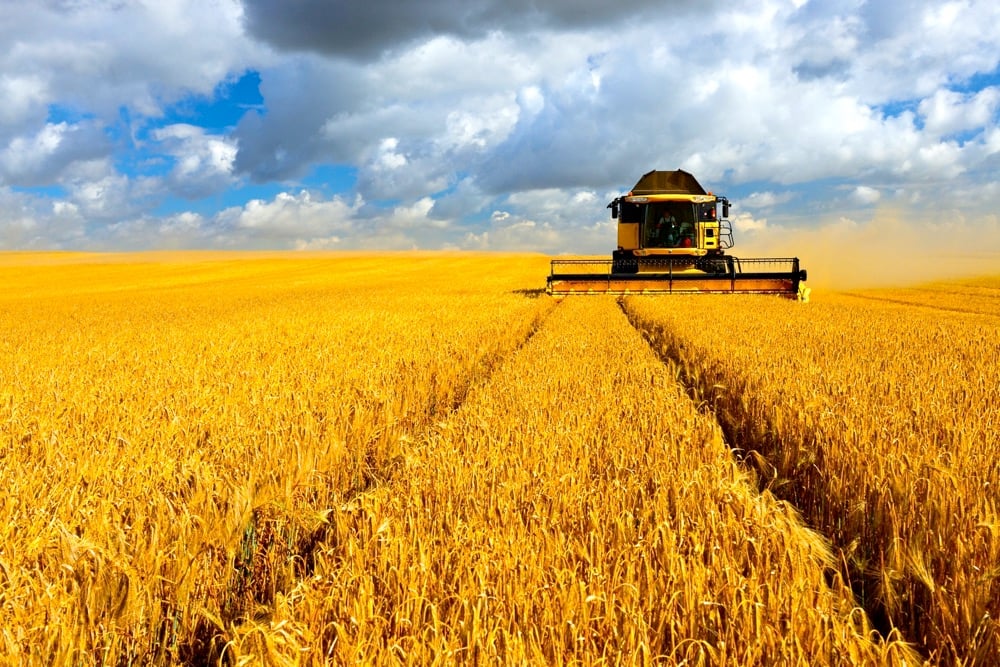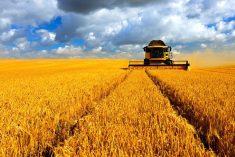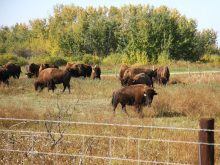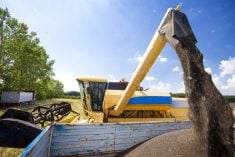MINOT, N.D. — It’s true that healthier soil cycles nutrients more efficiently and makes it possible for farmers to apply less nitrogen to long-term no-till fields, says a University of Manitoba soil scientist.
However, Mario Tenuta said a 50 pound per acre reduction for no-till fields is astronomical.
“In the short term, they may be able to get away with the 50 (fewer pounds of nitrogen), but in time I wonder if there’s going to be a decrease in productivity,” said Tenuta, commenting on a North Dakota State University extension recommendation that a field that is zero tilled for five years or more requires 50 lb. less nitrogen per acre than a conventionally tilled field.
Read Also

Manitoba harvest 72 per cent done: report
Manitoba farmers made good harvest progress during the last week of September, with 72 per cent of the crop in the bin as of Oct. 1, said the latest provincial report. That was up from 56 per cent done the previous week.
“I think that it would be a mixture of the fact that mineralization has gone up and the (plant) is going to be in a better state physiologically,” said Tenuta, who hadn’t previously heard about the NDSU recommendation.
“The question becomes 50. Fifty, to me, is quite astronomical…. I would have expected a number like 10 or 15.”
Cindy Grant, an Agriculture Canada soil fertility specialist in Brandon, was also astonished by the NDSU recommendation.
Like Tenuta, Grant was skeptical.
She said no-till systems do increase soil organic matter, and plants can tap into the nitrogen from that source through mineralization. However, she hasn’t seen field data to justify a 50 lb. per acre nitrogen reduction.
“It’s releasing the nitrogen because it’s breaking down organic matter, and that’s kind of contrary to what you want. There’s no free lunch.”
Tenuta said a healthy community of soil micro-organisms can help plants tap into nutrients within the soil, but bacteria and fungi can’t make nitrogen.
“I would agree there would be some benefit in terms of nitrogen use efficiency in a healthier soil system,” said Tenuta, who specializes in soil ecology.
“The key thing is, where are they (organisms) going to get the nitrogen from? They have to get the nitrogen from somewhere.”
John Heard, a Manitoba Agriculture crop nutrition specialist who has known about the NDSU recommendation for a while, said it’s well known that farmers who adopt zero tillage must add more nitrogen for the first several years “to account for the immobilization” of nitrogen in the soil.
They can eventually back off the higher rates and apply nitrogen at a rate similar to conventional tillage,” he added.
“But (NDSU) is the first one where there’s been a recognition (of) better nitrogen efficiency. What has people surprised is the very liberal credit associated with it.”
Heard, who spoke at the 2013 Manitoba-North Dakota Zero Tillage meeting, surveyed North Dakota farmers and concluded that not many are acting on the recommendation.
“Zero tillers appreciate the recognition that their system … no longer needs more nitrogen than a conventional system, but I don’t think very many are seriously cashing in on this reduction,” he said.
“I think they’re too cautious to do that.”
Heard said the late Guy Lafond of Agriculture Canada compared fields with zero till, continuous cropping and mixed rotations to a conventional system with summerfallow.
“(Guy) showed higher yield potential and better nitrogen use efficiency in the zero till system,” Heard said.
“But it wasn’t just a zero till system.… it’s a cropping system approach.”
While he remains skeptical, Heard said Canadian no-tillage farmers who are curious about the NDSU nitrogen guidelines could test out the concept on their farms.
“Are you game to try a strip like this?” he said.
“If you do, there are a couple of things you look at (on) your strip when you harvest. You look at yield and you look at protein. If you’ve lost on either of those, (then) 50 lb. is too much.”

















